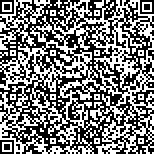| 引用本文: | 许洪彬,綦向军,方彩珊,邓洁宜,史佩玉,莫嘉浩,梁浩锐,袁天慧,吴辉.基于网络药理学探讨真武汤治疗慢性心力衰竭的作用机制[J].中国现代应用药学,2020,37(15):1801-1811. |
| XU Hongbin,QI Xiangjun,FANG Caishan,DENG Jieyi,SHI Peiyu,MO Jiahao,LIANG Haorui,YUAN Tianhui,WU Hui.Study on the Mechanism of Zhenwu Decoction in Treating Chronic Heart Failure Based on Network Pharmacology[J].Chin J Mod Appl Pharm(中国现代应用药学),2020,37(15):1801-1811. |
|
| |
|
|
| 本文已被:浏览 52354次 下载 21944次 |

码上扫一扫! |
|
|
| 基于网络药理学探讨真武汤治疗慢性心力衰竭的作用机制 |
|
许洪彬1, 綦向军2, 方彩珊2, 邓洁宜1, 史佩玉2, 莫嘉浩1, 梁浩锐2, 袁天慧3, 吴辉3
|
|
1.广州中医药大学第二临床医学院, 广州 510006;2.广州中医药大学 第一临床医学院, 广州 510006;3.广州中医药大学第一附属医院, 广州 510405
|
|
| 摘要: |
| 目的 基于网络药理学探讨真武汤治疗慢性心力衰竭(chronic heart failure,CHF)的作用机制。方法 通过中药网络药理学分析平台(TCMSP)获取真武汤中候选化合物,利用SwissTargetPrediction平台进行候选靶标预测,并将TCMSP中相应化合物的靶点作为补充,利用Uniprot数据库将靶点蛋白转化成基因名;通过CTD和TTD数据库获取CHF的相关基因,将真武汤靶标(基因)与CHF相关基因取交集作为真武汤治疗CHF的潜在靶标,将交集基因提交至STRING11.0在线数据库进行蛋白互做分析,并借助网络可视化软件Cytoscape 3.7.1绘制蛋白相互作用网络图,利用Excel构建真武汤中药-潜在化合物-潜在靶标网络,并利用Cytoscape 3.7.1进行可视化;通过RStudio的clusterProfiler包进行通路富集分析;利用分子对接技术对关键靶点和化合物的相互作用进行验证。结果 通过设置OB和DL值筛选得到真武汤化合物59种,在获得交集基因36个后,剔除不含交集基因(靶标)的化学成分,最终筛得化合物49种,KEGG富集分析共获得36条,其中13条与CHF相关,分子对接结果显示真武汤主要活性成分与CHF关键靶点具有较好的结合。结果表明去甲乌头碱、3β-乙酰氧基苍术酮、山奈酚、芍药苷、豆甾醇、β-谷甾醇等为真武汤主要活性成分,白介素6、内皮型一氧化氮合酶、血红素加氧酶1、前列腺素G/H合酶2、过氧化氢酶等为主要作用靶标,主要调控环鸟苷酸-蛋白激酶G信号通路、肾素分泌、钙信号通路等通路。结论 本研究初步明确了真武汤通过多成分-多靶点-多通路治疗CHF的作用机制,为深入研究真武汤的药效物质基础和作用机制奠定基础。 |
| 关键词: 真武汤 慢性心力衰竭 网络药理学 有效成分 通路分析 分子对接 |
| DOI:10.13748/j.cnki.issn1007-7693.2020.15.002 |
| 分类号:R285.5 |
| 基金项目:国家自然科学基金项目(81704036);广东省自然科学基金项目(2017A030310121);国家中医临床研究基地建设项目(国中医药科技函[2018]131号) |
|
| Study on the Mechanism of Zhenwu Decoction in Treating Chronic Heart Failure Based on Network Pharmacology |
|
XU Hongbin1, QI Xiangjun2, FANG Caishan2, DENG Jieyi1, SHI Peiyu2, MO Jiahao1, LIANG Haorui2, YUAN Tianhui3, WU Hui3
|
|
1.Guangzhou University of Chinese Medicine, The Second Clinical Medical College, Guangzhou 510006, China;2.Guangzhou University of Chinese Medicine, The First Clinical Medical College, Guangzhou 510006, China;3.The First Affiliated Hospital of Guangzhou University of Chinese Medicine, Guangzhou 510405, China
|
| Abstract: |
| OBJECTIVE To explore the mechanism of Zhenwu decoction in treating chronic heart failure(CHF) through network pharmacology. METHODS Candidate compounds in Zhenwu decoction were obtained through the Traditional Chinese Medicine Systems Pharmacology Database and Analysis Platform(TCMSP). SwissTargetPrediction platform was used to predict candidate targets, the targets of the corresponding compounds in TCMSP were supplemented. Uniprot database was used to convert target proteins into gene names. Genes related to CHF were obtained by CTD and TTD databases, taking the intersection of Zhenwu decoction target(gene) and CHF-related gene as the potential target of Zhenwu decoction in the treatment of CHF. The intersection gene was submitted to STRING11.0 online database for protein interchange analysis, the network diagram of protein interaction was drawn by using network visualization software Cytoscape 3.7.1. By using Excel, the network of Zhenwu decoction-potential compound-potential target was constructed, Cytoscape 3.7.1 was used for visualization. Path enrichment analysis was performed through RStudio's clusterProfiler package. Molecular docking techniques were used to validate the interactions between key targets and compounds. RESULTS There were 59 compounds of Zhenwu decoction which were screened by setting OB and DL values. After 36 intersection genes were obtained and chemical components without intersection genes (targets) were eliminated, 49 compounds were finally screened. A total of 36 articles were obtained by KEGG enrichment analysis, 13 of which were related to CHF. The results of molecular docking showed that the main active ingredients of Zhenwu decoction had a good combination with the key targets of heart failure. Deoxyaconitine, 3b-acetoxyatractylone, kaempferol, paeoniflorin, stigmasterol and b-sitosterol were the main active ingredients of Zhenwu decoction, interleukin 6, nitric oxide synthase 3, heme oxygenase 1, prostaglandin G/H synthase 2 and catalase were the main targets, main control cyclic guanylic acid-protein kinase G signaling pathway, renin secretion and calcium signaling pathway. CONCLUSION This study preliminarily clarified the mechanism of Zhenwu decoction in treating CHF through multi-component, multi-target and multi- pathway therapy, laying a foundation for further study on the pharmacodynamics basis and mechanism of Zhenwu decoction. |
| Key words: Zhenwu decoction chronic heart failure network pharmacology active components pathway analysis molecular docking |
|
|
|
|
